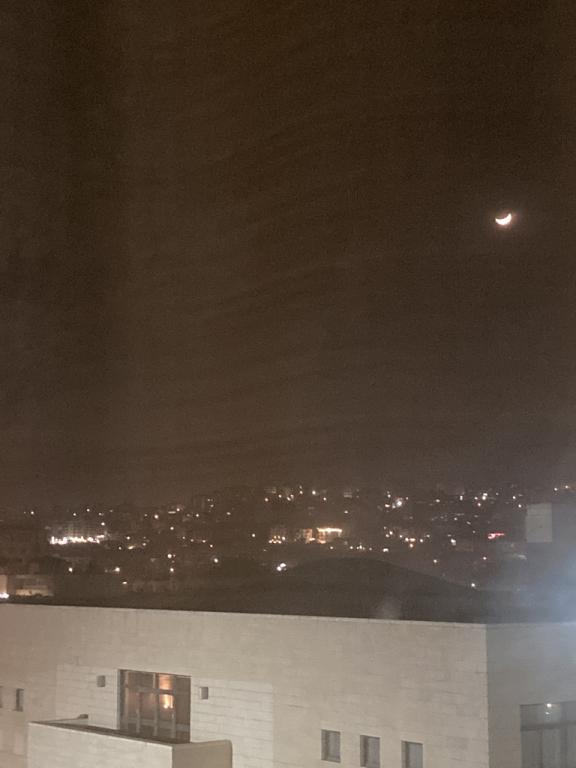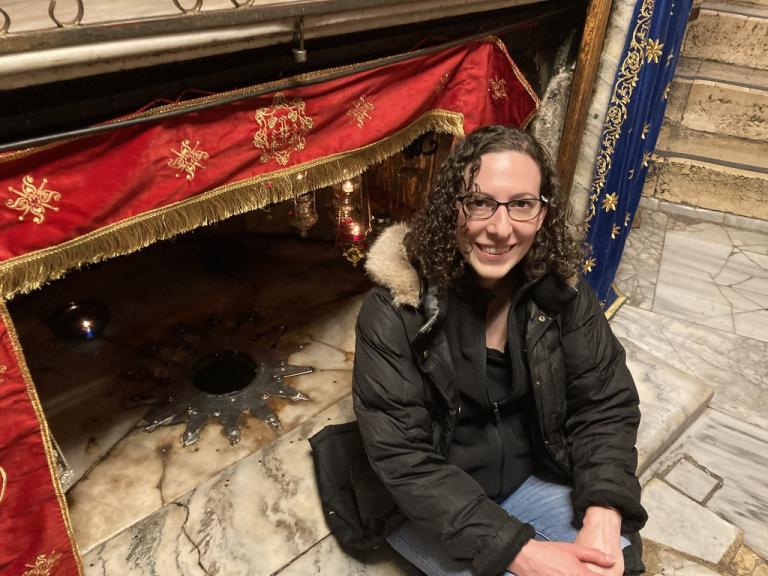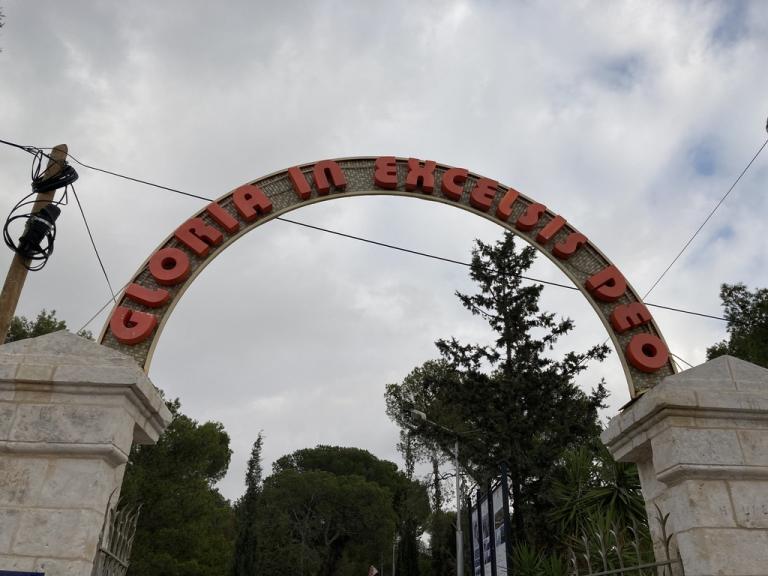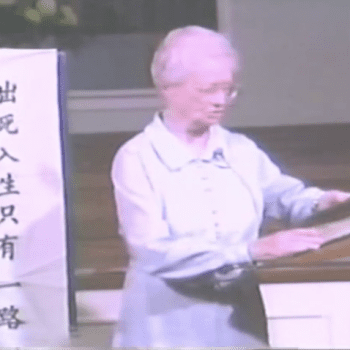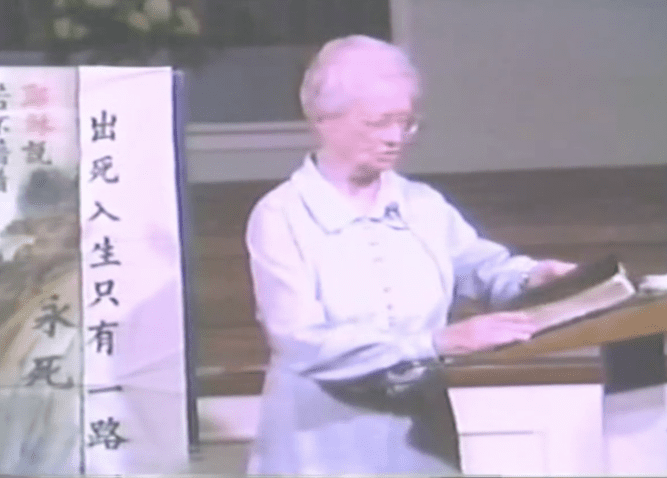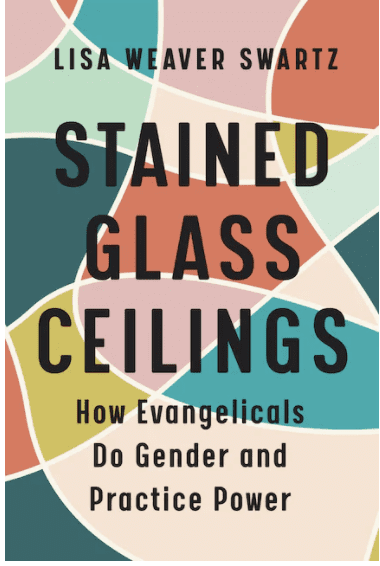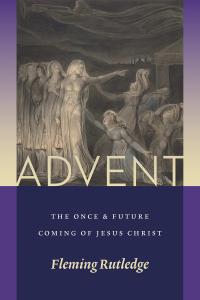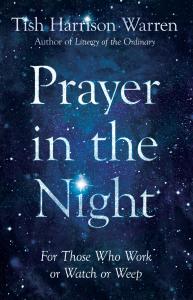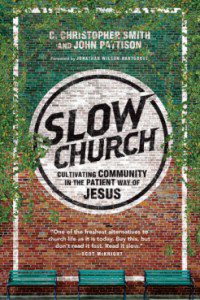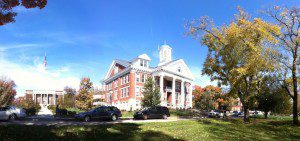Neil Rappleye is a Book of Mormon apologist. He recently did a piece about me at his blog, under the title The Goose and the Gander, and he is fully entitled to take issue with me on anything and everything. I don’t intend to respond to every criticism or comment he makes, but I am responding to this one because it raises interesting issues about methodology, and the relationship between authentic history and pseudo-history. Although I am addressing this to him personally, the same arguments apply to most of the apologist claims, particularly as they concern the Old Testament.
I have had a couple of exchanges with Neal Rappleye in the past. Then as now, he strikes me as smart and literate. I am no less struck by the puzzling disconnect between the articulate nature of what he writes, and the startling lack of sophistication of his arguments. By far his weakest spot concerns his use of far-fetched and wildly unconvincing analogies, which instantly destroy the credibility of his arguments – more on that shortly. This may all reflect the fact that Book of Mormon apologists really never engage with mainstream scholars. Virtually no mainstream academic takes his cause seriously enough to be worth arguing with, so an apologist never has an opportunity to test his/her arguments in that setting.
To over-simplify, Neal suggests that there really is remarkably little credible, concrete evidence for many aspects of the Old Testament story, so we have no better or worse grounds to accept the literal truth of that narrative than we do the Book of Mormon. There are two main rhetorical points at issue here.
1. When apologists have totally failed to supply any objective, credible evidence for any detail in the Book of Mormon, as requested repeatedly, they regularly throw up a smoke screen about an unconnected topic. So, no, the menu item here is neither goose nor gander, it’s wild goose, as in chase. Or maybe red herring is the better metaphor. Delicious, perhaps, but irrelevant.
2. The other rhetorical tactic is basically, no, he can’t produce a word of concrete evidence for the Book of Mormon, but (he claims) the same issues apply to the Bible as well! Christian claims depend just as much on faith as does the Book of Mormon! This has the rhetorical bonus of trying to divert the discussion from the Book of Mormon, where his views are completely untenable and indefensible, and off to the Bible, where the real, serious literature is immense. This art of diversion and obfuscation is a principal goal of “Ancient Book of Mormon Studies” if not its chief raison d’etre.
Let me explain why his Biblical analogy is wholly bogus.
As his central example, he takes the Biblical story of the Exodus. He cites James K. Hoffmeier, a fine and prestigious Biblical scholar, absolutely reputable, but certainly at the conservative end of the spectrum. So Hoffmeier says “that the Exodus and Wilderness narratives are central to O[ld ] T[estament ] T[heology], and that without them, the tapestry of Israel’s faith and the foundational fabric of Christianity unravels.” That’s his opinion, not mine, and not that of a sizable share of the academic profession examining the era, including a great many Christians and Jews. In my personal opinion, the argument has definitely gone against Hoffmeier’s point of view even more in recent years.
Just because Neal is a Book of Mormon fundamentalist doesn’t mean that Christians and Jews have to be fundamentalists to be authentic believers.
Neal then writes,
as Hoffmeier demonstrates with the Exodus, the strength of the case is not in “any single credible fact,” but in a myriad of subtle, circumstantial details that converge between the text and the external data. As such, there is no single data point that can satisfy a challenge like that of Jenkins for the Exodus. And things are similar for the Book of Mormon and Pre-Columbian America.
I assume he was fighting to retain a straight face when he wrote that atrocity, and especially when he used the word “similar”?
At an extreme minimum, here is what Hoffmeier could plausibly argue by way of circumstantial detail for his Exodus: We have the rock solid and well documented fact that the Pharaonic kingdom of Egypt existed. (Please don’t let’s argue about that?) We have the rock solid and well documented fact that Semitic peoples had often been in Egypt, that they had been a major part of the Hyksos coalition, and that many lived nearby under Egyptian suzerainty. We have the rock solid and well documented fact that, in the twelfth century BC, something called Israel appears in Canaan. We have the less solid fact that some of the Bible’s very oldest verses, such as the Song of Miriam, might record something like an Exodus event, but I don’t push that point. The most powerful single piece of evidence, of course, is the strong literary tradition of some kind of Egyptian connection, recorded no later than three centuries or so after the event.
Taking them altogether, might that suggest an Exodus? Maybe, but I would be careful in defining my terms. Just what do we mean by an Exodus anyway? Do we have to accept the Ten Plagues? In any case, Hoffmeier may well be right. Certainly, there is some kind of Egyptian connection or context to the founding of Israel.
Now let’s look at how exactly “similar” things are for the Book of Mormon and Pre-Columbian America:
We have no documented facts – none, not a single one – that confirm or vaguely point to the existence of any, any, peoples, nations, languages, places, or ethnicities in the New World that are described in Joseph Smith’s book. None – not now, not ever, never. Tell me again about your “myriad of subtle, circumstantial details that converge between the text and the external data”? Never mind a myriad, just give me one credible data point. Try not to giggle when you do so.
And “the text,” you say? In the context of the Book of Mormon, would that be a wholly unprovenanced document that emerged in 1830, not even in an ancient language, and which is more or less universally regarded as entirely lacking in authentic historical content? You mean that text? (“Unprovenanced” is the most charitable word I can find right now).
Go ahead, tell me that Reformed Egyptian is an authentic ancient language, and use any reputable Egyptologist you like to support that claim. I double dare you.
Also note the jaw-droppingly silly tactic here: comparing finding archaeological evidence for a single event, like the Exodus, which would have happened in a very short period of time (assuming it occurred) with seeking evidence for the supposed presence of a nation or community over a millennium. The archaeological footprint of a specific event is utterly and totally different from that of a community, nation, tribe or city over such a long period. And if the Exodus/Wilderness story is true, then it mainly involves nomadic societies, quite different from the settled cities alleged in the Book of Mormon. Is that not all too obvious to be worth spelling out? Not, obviously, to Book of Mormon apologists.
Night and day, black and white, apples and oranges.
I am delighted to see Neal reading my books. It might behoove him though to check out my 2011 book Laying Down The Sword, in which I did discuss this Exodus and Egypt issue in some detail. I argue, as do most scholars, that Israel emerged out of historic Canaan, from a variety of older ethnic groups and communities. Some might have been Egyptian derived. I don’t believe there is any hard archaeological evidence for the exodus as described in the book of Exodus, with all the miracles and stories. That is utterly different from the issue of some Semitic peoples in Egypt joining the movement to Canaan. Is there no single point of tangible material confirmation for the Exodus? OK, so no big thing.
Neal then gets into the early history of Israel, making the following cosmic leap:
This makes for a decent comparison to the Book of Mormon, because it likewise tells a story that starts with a family or small clan (smaller than that of Israel, in fact), which then grows into a large population over the course of several hundred (actually, about 1000) years. And, like the Book of Mormon in the New World, there is not a single scrap of evidence for the Israelites in Egypt or Sinai. In fact, one could aptly paraphrase Jenkins here: “Can anyone cite any single credible fact, object, site, or inscription from [Egypt or Sinai] that supports any one story found in the [books of Genesis, Exodus, Leviticus, or Numbers]? One sherd of pottery? One tool of bronze or iron? One carved stone? One piece of genetic data?”
Oh Good Lord. This is such baloney from start to finish.
Can I produce such a piece of evidence? For a particular individual, such as Abraham or Isaac or Moses, no. But for the peoples being in the right place, roughly, at the right time, obviously yes, in the wagonloads. Were there Semitic peoples across the Fertile Crescent in the third and second millennium BC? I dunno, let’s go ask the Akkadians, Amorites, Eblaites and Canaanites/Phoenicians. Let’s look for some tens of thousands of data points about this. Were the states, empires and kingdoms described in the Pentateuch there, including such casually mentioned people as the Hittites? Oh yes indeed. Were Semitic peoples living under Egyptian rule in Palestine and Syria? Yup.
Evidence from Egypt itself, you ask? How about the Amarna Letters? They clearly show the existence of Semitic nations, cities and communities in Canaan/Palestine in the couple of centuries before the Exodus, and also indicate wandering bands of more or less certainly Semitic raiders, nomads and marauders in that region and at that time. Some of those cities are named in the Conquest narrative. Let’s also look at the history of the Hyksos in Egypt from the 18th century BC onwards, not to mention all the visual and textual descriptions of Semitic peoples in Egypt and the territories under its control.
And let’s look at the consequences and aftermath of the eras examined. Suppose we are dealing with small clans, in Israel and Mormon-Land:
No sane person doubts that, whatever its origins, something called Israel existed for centuries after the twelfth century BC, with the languages and ethnic characteristics described in the Bible. That is beyond argument.
Unless he is basing himself on unquestioning faith and dogma, no competent scholar believes that, whatever its origins, something called the Nephite polity existed in the New World, with the languages and ethnic characteristics described in the Book of Mormon. That is likewise beyond argument.
Israel was, incontrovertibly, there. The Nephites, just as incontrovertibly were not, and if you think they were, please start showing evidence. I’m getting tired of pleading.
By the way, I don’t have to produce evidence specifically from Egypt or Sinai (though as I say, I easily can) because in my view, it is not essential to the story of Israel. (Hoffmeier would disagree). Neal writes “The Mernepteh [sic] Stela (ca. 1208 BC) supports the existence of Israelites in Canaan, but not that they came from Egypt.” That’s right, and it indeed proves the existence of Israel. Now show me one inscription from some other New World people to confirm the existence of any of your Book of Mormon fantasy folks, any nation, tribe, language, city or people? Take your time …. I’m sure you have a huge selection of candidates to choose from. A myriad, probably.
Night and day, black and white, apples and oranges.
Neal Rappleye also writes this:
The fact is there is no evidence to support the idea that the Israelites were ever there [in Egypt]. No pottery. No inscriptions. No tools. No cities. In fact, there is no evidence to even suggest that Israelites existed before the late 13th century BC, and by then they are already in Canaan, and most experts (e.g., William Dever, Israel Finkelstein) would argue that they were an indigenous group—not immigrants from Egypt via Sinai. Again, in Canaan, there is no single piece of evidence to support a migration from Egypt. No pottery. No inscriptions. No tools. No cities.
I actually agree with most of this, and agree that Israel emerges in Canaan in the century or so following 1250 BC. That’s the position I have taken in my writings. So what? But then look at the lunatic analogy Neal then builds on that.
Suppose that I can’t prove that Semitic peoples are in Egypt in, say the thirteenth century BC (though everybody admits that their relatives had been there recently, and there were lots of Semitic peoples a hundred miles or so to the east. Really, not far when they chose to hitch up their U-hauls). This is, says Neal, precisely comparable to not being able to prove that similar peoples are in the New World over a period of a millennium or so, where the evidence for Semitic peoples ever having been present on the entire continent at any point before the time of the Spanish Empire is zero, nada, zilch, none.
And that is a valid comparison? What “there” are you talking about?
Zero plus zero = zero
(Zero plus zero) cubed = “Ancient Book of Mormon Studies.”
Put another way. We know that the peoples, languages and ethnicities described in the Pentateuch (you left out Deuteronomy) were in the regions described, as an absolutely certain, incontrovertible, multiply documented fact. Did they rewrite their history some, and reinvent their origins? Sure.
And that’s just like the Book of Mormon isn’t it? Where we are so sure that the peoples, languages and ethnicities described were in exactly the regions of the New World portrayed, as an absolutely certain, incontrovertible, multiply documented fact! And that’s why people like you and Bill Hamblin have failed totally to produce a single smidgeon of evidence in support of their mere existence. And Bill Hamblin and his friends have been searching for decades.
In other words, the situation with the Bible and the Book of Mormon is exactly identical, except that in the Mormon case, we have no trace of evidence that any of the peoples ever existed. Hmm, some difference, don’t you think?
Night and day, black and white, apples and oranges.
Here’s another key difference. Your view is entirely and totally based on faith, dogma and alleged revelation. Mine depends on none of the above (although I would subsequently use that history as a basis for faith). And the same distinction applies to all Book of Mormon apologists.
Let me explain.
Let’s do a thought experiment. Assume for the sake of argument that we did not have the Bible as a resource. Assume that we were reconstructing the history of Palestine in the first millennium BC using entirely non-scriptural sources – from archaeology, from non-scriptural texts and inscriptions, and from the various records (mainly texts and inscriptions) of outside nations. We would see Israel emerging in the thirteenth/twelfth century BC, we would have an excellent idea of its changing social and religious institutions through the centuries, we would know its languages, and we would have plenty of writers, both contemporary and later, to fill in the names of kings, dynasties, etc. We would know a lot about its interactions with neighboring powers, not to mention the presence of Israelites in other nations and regions. We would know a huge amount about domestic architecture and social structures, modes of life, class structures, and so on.
Without using religious scriptures of any kind, then, we would have an excellent view of Israel, its languages, ethnicities, people and history. No sane person would doubt the existence of that Israel, although they might argue over details of its political history.
Now look at Mormonia. Without the Book of Mormon, would any scholar ever have speculated about a Semitic or Middle Eastern presence of any scale or nature whatever in the New World? In nineteenth century racist crank theories, yes, but not in any kind of modern scholarship. If there was no Book of Mormon, we would have not the vaguest, slightest hint of any suggestion of a Middle Eastern/Semitic presence. Without using religious scriptures of any kind, then, we would neither know about nor speculate on any kind of “Nephite” presence in the New World, its languages, ethnicities, people and history. It would not exist, because it doesn’t.
Therefore, your views depend entirely on alleged religious revelation, and that is why you are constantly scrambling to find real world confirmation. That is also why your views are irrelevant to any kind of scholarship, other than theology. What bothers me is not that you are preaching religion and revelation – heaven knows! – but that you don’t recognize or acknowledge the fact. If you believe or preach differently, you are deluding yourself.
Night and day, black and white, apples and oranges.
Neal should be ashamed to post an offering like this.
I said I respected Neal Rappleye’s intelligence and writing skills, and I seriously do. He is also fighting the last stand of “Ancient Book of Mormon” apologetics.
And what a fall was there. From Joseph Smith’s time through the mid-twentieth century, Mormons knew as a matter of faith that those ancient Semites had left huge footprints in the New World, not least in terms of the genetic origins of most or all Indians. Did not Nephites alone runs into the hundreds of thousands, or the millions? Was not Illinois in the Plains of the Nephites? (Don’t blame me for that observation, I am citing a credentialed prophet, right?) And then look what Neal Rappleye has to say, as his claim:
“Such convergence strongly suggests that the Book of Mormon is a particular version of Mesoamerican history–a version written from the perspective of a minority elite who traced their lineage to a small immigrant group from Palestine and maintained a form of Israelite religion.”
A minority elite, that never made a mark, never did much, never grew to any size or significance… just a bunch of boring stay at home Guatemalans. Why do we have that decline? Because Neal wants, of religious necessity, to believe in the Book of Mormon, but he is astute enough to know how slim-to-non-existent are the forms of evidence that can be offered to grown ups. The only way he can get around this is to postulate a story that makes no impact on the wider real world narrative, and where he has any number of possible let outs to explain the absolute lack of evidence for his cause.
Dare I say a myriad excuses?
I would say that the ”minority elite” story involves suspending a lot of the Book of Mormon narrative and assumptions, but hey, that’s his problem not mine.
It is a nice picture though. Instead of the mighty Nephite cities and civilizations dreamed of in days of yore, we have a tiny bunch of Semitic-derived transients, shouting “Look out, everyone, here comes the Gaze of Historical Research! Oh no, they’re looking for Objective Evidence! Everyone go hide behind a palm tree until they’ve gone. Thank heavens we are just a minority elite.”
That could be a great film. Does Mel Brooks do Mormon stuff?
In summary: if you want to claim truth for a single word of the Book of Mormon, then prove it. Don’t try and prove the whole thing, obviously, that’s an impossible task. But go ahead and give me one piece of credible evidence that at some point before Columbus, the New World was home to some people, who were derived from the Middle East, who were either Semitic or Semitic-derived. Show me one piece of evidence (not rooted in religious faith) for the existence of such ethnicities, nations, cultures or languages in the New World.
Particularly, show me one piece of worthwhile evidence for this thing about them keeping up some form of Israelite religion. “Good Heavens, Dr. Jones, look there – over the carvings of the severed heads, at the doorway of the jaguar temple! Isn’t that a mezuzah?” Dear Mr. Brooks, Have I got a script for you!
Does that sound like I’m making fun of you? Of course I am, but I am also asking a centrally relevant question. You have made this ludicrous assertion about Israelite religion in the New World. Produce one shred of non-faith based evidence to prove it. Extraordinary claims demand extraordinary evidence. Hilariously improbable ones demand no less.
If in fact those communities were there for over a millennium, the task should be simple. Oh heck, let me set the bar really low. Don’t bother trying to track down an individual or a name or a specific place, just show me anything suggesting the mere existence of that Middle Eastern linked community in the New World. For just one village, one family, one group.
You won’t do it, because you can’t. What you will do is spend a great many posts rambling about every other matter under the Sun, explaining why nobody can or should ask for such an outrageous thing as “evidence” (The horror! The horror!) and you’ll do so until you hope your readers stop noticing the sleight of hand and pretend the whole issue goes away. And behold, it was all a bad dream!
Am I wrong about that? Then show me.




